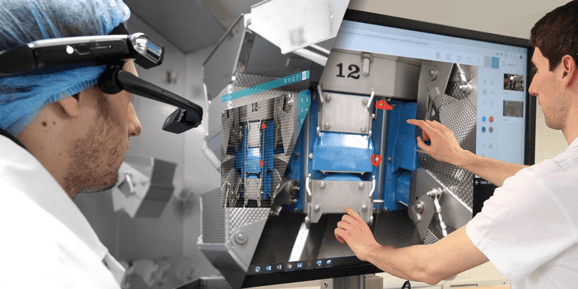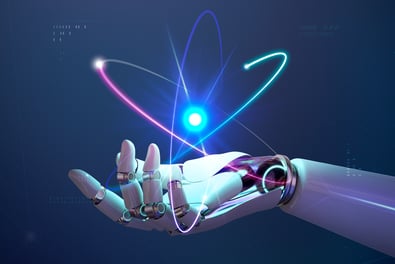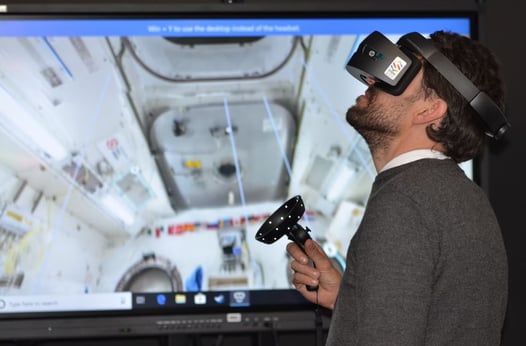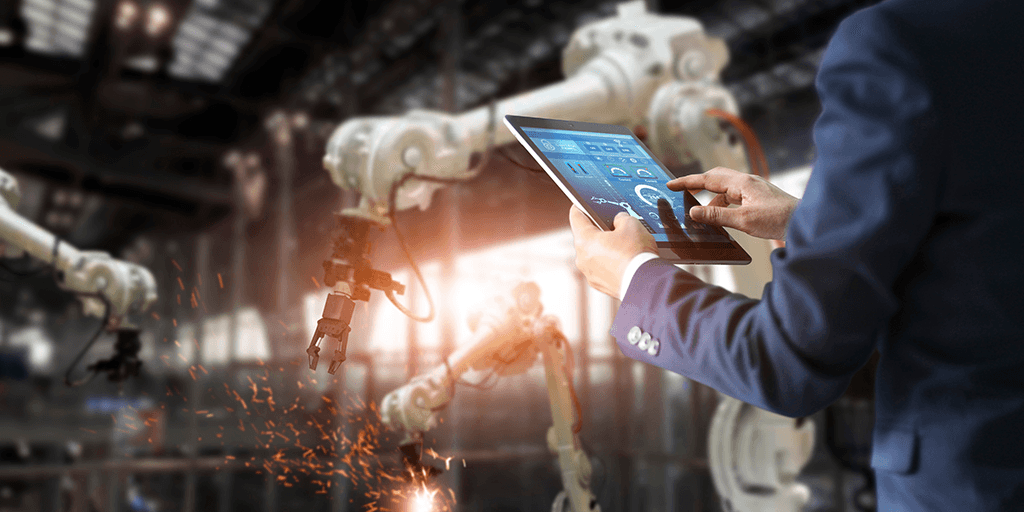What is a smart workplace?
A recent global market study defines a smart workplace as the technology, solution, and services that connects, engages and enables people to work faster, better, and smarter. Undoubtedly, technology delivers new ways of working and improving workforce efficiency. Discover top technology trends that shape the smart workplace of today.
#1 5G and fiber
''5G promises a world where everything is connected, aware and responsive, where you do not have to worry about the connectivity in the first place"

5G accelerates the workplace by speeding up information transmissions in real-time. This 5th generation of wireless data network has higher computing power than a PC or a mobile device, allowing the desktop and applications to be executed remotely, where the end device is acting as a terminal.
The key abilities carried by 5G are as follows:
-
High bandwidth
-
Low latency
-
Dense connection
Another fundamental component of the digital transformation in the workplace is a private 5G network (such as *Dome* proposed by b<>com). It is a dedicated network for private use by an organization and gives more control of the network with improved policies, security services, and data. It supports use cases in the field like utilities, manufacturing, agriculture, and many more as it provides better coverage for remote applications.
With 5G technology, Augmented Reality is achieved better with real-time response. 5G combined with Assisted or Augmented Reality opens up new possibilities for smart and agile remote training. For instance, a person wearing smart glasses can see and monitor overlaid images of the missing components or positions to assemble machines. This ensures better employee training with reduced risks.
Furthermore, high speed and low latency enable live access to experts, who can act instantly and offer live advice.
Read the article if you want to find out how 5G will benefit healthcare sector in the healthcare sector.
#2 Real-time video

Since connectivity is at the core of the smart workplace, the transmission of real-time video induces smooth video conferencing or two-way video calling.
Nowadays, enterprises are using live streaming for conducting their business activities like remote training and distance learning. The real-time video acts as a reliable way of addressing tasks in real-time. For instance, on-demand video can be an ideal knowledge base for future use.
Similarly, real-time video enhances the ability to "See what I see". With the flourishing concept of the "distance economy"(where business activities do not rely on face-to-face activity), people no longer need to be on the field to act. Some of the quantifiable benefits are increased employee productivity and reduced travel expenses.
#3 Artificial Intelligence
"According to the Future of Workforce Development report, 62% of hiring managers expect AI to substantially change the nature of work."

With its notable effects, AI has already proven to be more than just a buzz in the present workplace.
Artificial Intelligence can benefit from higher computing power in the cloud, which results in smarter decision-making. For example, AI can analyze trends, and forecast data to create unbiased decisions for enterprises. The AI-powered solution helps to predict failures or notify critical solutions. Further, its advanced computing power speeds up the processing and analysis of data.
From recognizing complex objects, to face detection by learning, AI is also extending its footprints in the medical field to diagnose diseases.
#4 Augmented Reality (AR)

The modern workplace highly relies on remote support and assistance tools to become more efficient. So, an Augmented reality can be an ideal technology, especially for frontline workers. Gone are the days when field workers had to consult information from the long confusing manuals or applications where most of the data were not applicable for the specific context.
With AR technology, the existing digitized information is displayed at the right place at the right time. AR headsets are proven to be an effective remote support tool as they provide creative ways to engage employees online. Similarly, it provides better instructions for the frontline workers. For example, employees can inspect better by identification of objects like pipes, manufacturing line, or ensure their safety in a potentially dangerous location.
Overall, these technologies help to increase the efficiency of the smart workplace by reducing inspection time, and possible errors.
“In a world where collaboration is important, AR can play a significant role in creating smart workplaces”
#5 Industrial Internet of Things (IIoT)
.png?width=545&name=Top_5_technology_trends_shaping_the_smart_workplace%20(2).png)
IIoT is the network of smart devices that embed sensors and share data, primarily in a private network for industries like manufacturing, agriculture, healthcare, and logistics. Also known as the industrial internet, IIoT is about using technologies that are capable of capturing, analyzing, and communicating data in real-time so that businesses can make faster and more accurate decisions.
IIoT has changed the way industrial companies operate today. For instance, IIoT can be an ideal solution for improving supply chain traceability and efficiency, and predictive maintenance.
For example, in the agriculture industry, we can use industrial sensors for collecting data about soil nutrients to help farmers. For predictive maintenance using IIoT technology, the field service technicians can identify issues in their customer equipment which enables them to solve them before they become major issues.
Accelerating the smart workplace journey
The smart workplace refers to a significant shift in the way that industries work today. The arrival of these new technologies is helping companies transform digitally. The smart workplace is not just about improved productivity, it is also about enablement, collaboration, and embracing sustainable solutions for a better future.
By, keeping all these aspects into consideration, we are offering XpertEye solutions to accelerate the digital transformation of companies and helping them embrace smart workplace technology with AR-powered solutions like assisted reality software, workflow management software, and time management software.
XpertEye Assisted Reality Platform is combining the power of AR, and IoT for the deskless workforce.

